Tree frogs: the most elegant amphibians
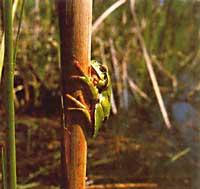
Along with ignorance, or as a consequence of it, there is often a notable abandonment in some groups of animals, with amphibians being a clear example of this reaction. How can anyone like those animals so cold, wet, slender and slippery? The truth is that amphibians have long been mixed in our culture, except in gastronomy; toads, txantxikus, wrinkles... have always been linked to the most lustful practices and legends related to witchcraft. Missing spells, toads and frogs have been considered as a very conflicting and viscous group of animals.
But as soon as we begin the studies of amphibians, all these deviant feelings fall immediately and are replaced by fascinating; if we dare to approach a little, we realize that the eye of the most feared toad hides a beautiful mosaic of colors. However, among the amphibians of Euskal Herria there are some rare and slender frogs that, without the need for hard efforts like this, have been able to overcome all the spares of the village for its obvious beauty: the frogs of trees ( Hyla sp. ).
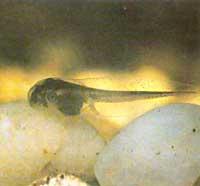
The common tree frog ( Hyla arborea) is an elegant 5 cm long frog, which is most striking at first sight is its intense and bright green color. The head is small, longer than long; the lateral eyes, large and remarkable, are wrapped in a dark line that goes from the end to the hind legs, completing the mimicry so necessary for the survival of this frog with the distortion of form. The belly is white by the ventral part and also porridge in females. In males, the potato may present a variable coloration: yellow or brownish to green. This has its function, of course. In fact, in the skirt is located the vocal cover with which the songs of the time are performed. In spring, between April and May, males begin to sing on the banks of rivers and lakes, for which the colorful collar cuff swells, adding to the acoustic call the visual.
As it is clear, frogs are animals that, in general, have reached a high degree of adaptation to the terrible life, and that thanks to their long and sharp hind legs, they have a great ability to take great jumps. However, in the case of tree frogs, the specialization in jumps increases: to better maintain the substrate, at the end of each finger they present a discoidal copadura, characteristic of the family Hylidae. A tree frog closes her eyes as she jumps and will not open them again until she reaches her destination. At that time, thanks to the vesical and wet epidermis of the copaduras, it adheres through the abdominal surface. For all this, frogs have colonized the vegetation of the banks of the water masses, which are hidden in reeds and bridges.
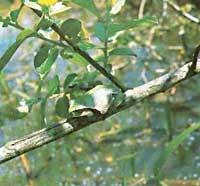
But the exit of water and the colonization of the land has greater obstacles than the system of movement. And to flee predators they have needed more than slender jumps. Therefore, inserted in the epidermia of tree frogs, and as occurs in many other anuros, poisonous glands that secrete toxic substances for predators will appear. Therefore, and although this system does not serve all enemies, (for snakes streams, among others — Natrix sp. —) if a predator accidentally ran over a tree frog, with these poisons he would immediately release it.
But don't think seeing the frog is so easy! These naughty frogs, able to change the coloration of the skin and take that of the substrate, will have mimetism as the first defensive way, so there are many hours attached to a branch or reed, as paralyzed as if they were wax. However, these changes of coloration do not always depend on the substrate and the factors that affect it are multiple: fear, humor, variations of humidity and variations, color of the sky, etc. And from there comes to this unique frog, among other things, the good reception of the human being, for its use as a natural barometer. According to this, and although the normal color is green, it is easy to find frogs of blue, brown, marbled gray or even almost white trees.
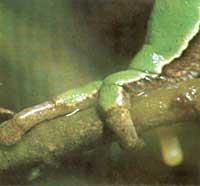
As we have mentioned, all these specializations of frogs are adaptations to life on the ground, but this does not mean that they have overcome the dependence of water, much less! And it is that these small vertebrates normally have to live near the water, and like most amphibians, it is necessary to maintain the level of body moisture, with a serious risk of dehydration. Therefore, the period of activity of tree frogs will extend from afternoon to early morning and, except in the time of heat, they are not usually visible during the day. Also, in case of very hot summer, the frogs of trees will tend to the stowage and until the outer conditions improve hide in the moat, in the low moss or in the vegetable mojones, fleeing the summer sargori. By not having control of the temperature of your body, even when the environment is too cold for you, you lose the activity by getting into the winter light. This hibernation lasts from October to March.
By tempering time, and when the shores of the waters are made of all kinds of new and fresh plants, the Spring Festivals begin for many animals and also for tree frogs. In early April, and ahead of females, male frogs are decorated. The colors of the vocal sheath of the potato are reinforced at this time with purple hues. And thanks to this structure, as if it were an old coobage, and united in large groups, they begin to claim their old song.

The importance of this song is enormous for reproduction, since in addition to the call, it also serves for knowledge. In fact, in the places where the common frog ( Hyla arborea) and the southern frog ( Hyla meridionalis) coexist, the lack of hybridization between the two species is based on the difference of edges (Paillete, 1967), an observation that has become the basis for the consideration of these two frogs of trees as subspecies of the same species.
Reproduction occurs in water, while external fertilization is performed with axial amplexus. The thick frog climbs on the back of the female, and thanks to its shells inside the hands, the female is held very tightly by the back of the arms, thus maintaining itself for a long time. In this position it helps the female to eliminate the eggs that have already developed. And as these eggs go outside, they will fertilize with the sperm secreted by the male.
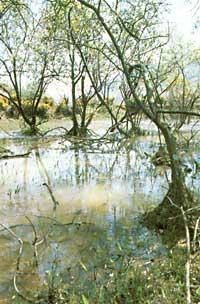
The laying is usually nocturnal, and each female (by groups at the bottom of the well) leaves hundreds of specimens.
Egg development lasts between 12 and 15 days, but may vary with water temperature. Then, some specific glands at the end of the larva secrete a substance that affects the break of the egg capsule, resulting in hatching. The newborn larva of 5-8 mm hardly has capacity to move; in three days the eyes, the napkins and the mouth will appear, and next to the gills and the appearance of the tail, will begin to move the little animal that we will already call the head.
At this time, the young tree frog, which is the new tree frog, is phytophagous, an animal that feeds on plants (eating), although it can use other foods. The tadpoles, for example, live by absorbing water and filtering out the plankton and organic waste that circulate through them; the aspirate water is expelled by a tubular structure that opens to the left of the head, known as spirass.
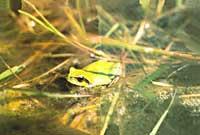
The development of the cob takes about three months, although this period is again related to temperature and other factors. The transformations that occur at this time are tremendous: in addition to the appearance of obvious legs and the loss of tail, other deep physiological adaptations that require moving from aquatic life to the terrestrial will be mandatory. The epidermis will become waterproof and the sense organs must adapt to the new environment. On the other hand, when passing from phytophagous to predators, transformations will occur in the mouth, jaws and digestive tract.
At the end of this process, the young frog comes ashore and will not return to water until three or four years later it reaches sexual maturity.

However, only a few of the hundreds of regulations will accomplish this. And in the end, the sense of laying so many eggs would be there: at that high level of mortality.
However, today frog problems come from another side. It is known that most of the beating that industrial society has given to the environment can be received by humid habitats; it is said that wells and marshes are muddy places, source of disease, or at least the place of origin of mosquitoes that extend them, which are also generated in our adjoining plant. For these reasons, the dwellings of frogs are covered with cement, forcing them to migrate and/or disappear.
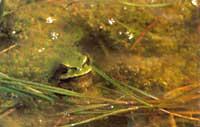
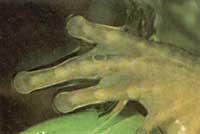
This problem is exacerbated in the case of southern tree frogs ( Hyla meridionalis). In Hego Euskal Herria this frog is more found than in Donostia, and although the observations come from a long time ago (Bosca, 1879), they are limited to a specific area, so it can be said that it is an exposed and isolated colony. Regardless of these problems, or what is worse, without having any idea about them, in the last three years two large wells of the southern tree frogs have dried up. This march will only be seen in books!
Isn't it time to look more closely at those nasty frogs?





